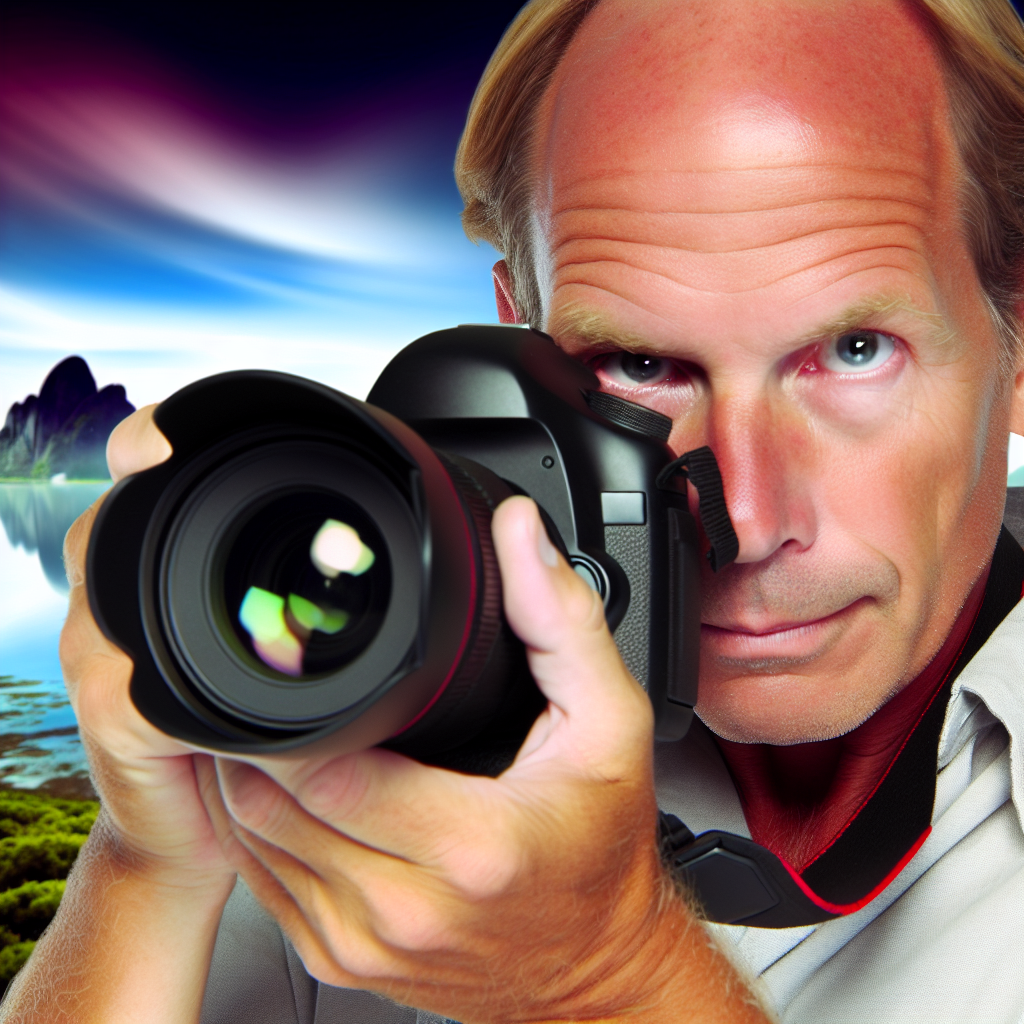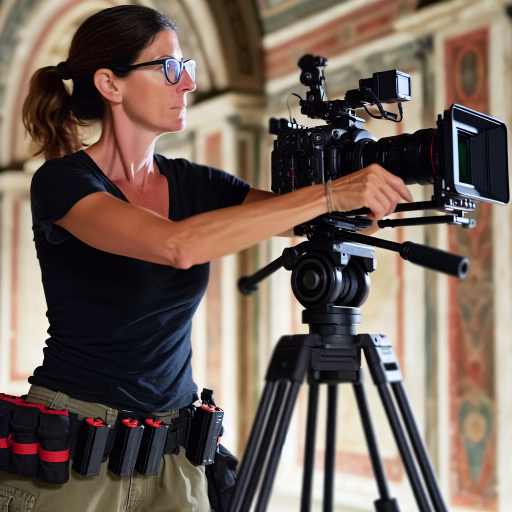Introduction
A photographer plays a crucial role in media and communication.
They capture images that convey messages and emotions.
Visual storytelling hinges on their expertise.
Photographers transform ideas into compelling visuals.
Photography serves as a universal language.
It transcends barriers and connects people.
Through powerful images, photographers tell stories that resonate with diverse audiences.
A single photograph can evoke emotions that words often cannot.
The importance of photography in storytelling cannot be overstated.
In journalism, impactful images complement written narratives.
They provide context and grab attention instantly.
Audiences remember visual content more vividly than text alone.
In advertising, photographers create aspirational imagery.
They shape brand identities and influence consumer behaviors.
Effective photographs can elevate products and connect with potential customers on a personal level.
Social media thrives on captivating visuals.
Photographers produce content that engages followers and drives interactions.
High-quality images can enhance a brand’s online presence and create shareable moments.
Moreover, a photographer’s technical skills play a significant role in media.
They understand lighting, composition, and editing techniques.
Transform Your Career Today
Unlock a personalized career strategy that drives real results. Get tailored advice and a roadmap designed just for you.
Start NowTheir expertise ensures that images are not only beautiful but also impactful.
Photographers also adapt to various platforms and formats.
They create images for print, digital, and social media.
Each platform requires a different approach, showcasing the photographer’s versatility.
In essence, photographers bridge the gap between artists and communicators.
They give a face to stories, making them relatable and understandable.
Through their lens, they capture the essence of our world.
Ultimately, the role of a photographer extends beyond taking pictures.
They contribute significantly to the way we perceive and understand communication.
Their work illuminates, informs, and inspires, enriching our media landscape.
Historical Perspective
The role of photography in media and communication has evolved tremendously over the years.
From its inception, photography has served as a powerful tool for storytelling.
It has shaped public opinion by documenting significant events.
This section explores how photography transformed media and communication.
The Evolution of Photography
Photography began in the early 19th century.
The invention of the daguerreotype in 1839 marked a pivotal moment.
Photographers could create direct positive images on polished metal plates.
This innovation sparked a new era in visual representation.
Fast-forward to the late 19th century, and we see significant advancements:
- The introduction of flexible film made photography more accessible.
- The Kodak camera debuted in 1888, allowing amateur photographers to capture moments.
- By the early 20th century, photojournalism emerged as a distinct genre.
Key Moments in History
Photography has played a crucial role in shaping public opinion at various historical junctures.
Transform Your Career Today
Unlock a personalized career strategy that drives real results. Get tailored advice and a roadmap designed just for you.
Start NowHere are some notable moments:
- The American Civil War (1861-1865): Photographers captured the harsh realities of war. Images by Matthew Brady and others brought the conflict into American homes.
- The Spanish-American War (1898): Photographs of the war inspired public sentiment. They influenced America’s engagement in global conflicts.
- The Great Depression (1929): Photographers like Dorothea Lange documented the struggles of everyday Americans. These images drove social change and policy reforms.
- The Civil Rights Movement (1950s-1960s): Iconic photographs of protests and events galvanized public support for the movement. They highlighted the fight for equality and justice.
- The Vietnam War (1955-1975): Graphic images from the battlefield shifted public perception. News photography influenced anti-war sentiment and political discourse.
- 9/11 Attacks (2001): The photographs taken during and after the attacks captured raw human emotion. They played an influential role in shaping national and global narratives.
Impact on Public Opinion
Photography’s ability to evoke emotion makes it a valuable medium in communication.
Images transcend language barriers.
They convey authenticity and truth in an increasingly complex world.
Consequently, key historical moments gained visibility through the lens of photographers.
For instance, during the Civil Rights Movement, photographs displayed the brutality faced by African Americans.
This visual advocacy mobilized support and sparked conversations about race relations.
Similarly, war photography exposed the realities of conflict, urging the public to question government actions.
Technological Advancements
The evolution of technology has continually reshaped photography.
Digital cameras and smartphones have democratized image creation.
Today, nearly everyone can capture and share moments instantly.
As a result, the volume of photographs in circulation increases exponentially.
Social media platforms have further amplified photography’s influence.
Images now travel vast distances within moments.
This immediacy can sway public opinion instantly, often leading to viral moments.
Photographers can showcase underrepresented narratives in real-time through social media.
Current Trends in Photography
Today, photography continues to evolve.
Here are some current trends shaping the industry:
- Documentary photography has gained renewed attention. Photographers focus on social issues and environmental concerns.
- Photojournalism is adapting to digital platforms. Multimedia storytelling combines images, audio, and text for deeper engagement.
- Mobile photography is on the rise. The convenience of smartphones allows anyone to be a photographer.
- Drone photography provides unique perspectives. Aerial images offer insights into landscapes and events that ground-level photography cannot.
- Artificial intelligence in photography enhances image editing. AI tools streamline processes, allowing for creative exploration.
Significance of Photography in Communication
The historical journey of photography underscores its critical role in media and communication.
It has the power to shape narratives, influence public sentiment, and advocate for change.
Transform Your Career Today
Unlock a personalized career strategy that drives real results. Get tailored advice and a roadmap designed just for you.
Start NowAs technology continues to advance, photography will undoubtedly remain a vital medium for communication and storytelling.
The evolution of photography has fundamentally transformed the way we perceive reality.
By documenting significant moments, photographers engage audiences and provoke thought.
Their work continues to inspire, challenge, and, most importantly, foster understanding in a complex world.
Types of Photography in Media
Photography serves as a crucial pillar in media and communication.
Photographers use their skills to create visual content that informs, entertains, and engages the audience.
Here, we will explore various types of photography in media, highlighting the specific roles and responsibilities of photographers in each category.
Photojournalism
Photojournalism merges journalism and photography.
It captures real-life events and presents narratives visually.
This type of photography focuses on newsworthy events.
Photojournalists often work under tight deadlines and stressful situations.
Roles and Responsibilities
- Storytelling: Photojournalists tell stories through images. Their photos need to convey the essence of an event.
- Research: Before an assignment, they research the subject matter. This understanding helps them capture the right moments.
- Capturing Authenticity: They aim to present images that reflect true events. This authenticity builds trust with the audience.
- Adhering to Ethics: Ethical considerations are crucial. They must report accurately and refrain from manipulating images.
- Working in Various Environments: Photojournalists often work in chaotic environments. They must adapt quickly to changing situations and scenes.
Documentary Photography
Documentary photography captures moments that tell stories over time.
This type of photography focuses on social issues and strives to provoke thought.
Photographers often work on long-term projects to explore complex themes.
Roles and Responsibilities
- Long-Term Engagement: Documentarians engage with their subjects over extended periods. This engagement fosters trust and deeper understanding.
- Visual Storytelling: They utilize visuals to narrate ongoing stories. Each image contributes to a larger narrative.
- Research and Context: Photographers conduct substantial research. Understanding the socio-political context is vital for impactful storytelling.
- Highlighting Issues: They aim to shed light on pressing issues. Their work can provoke discussion and inspire action.
- Exhibition and Publication: Many engage in exhibitions or publications. These platforms amplify their messages and reach wider audiences.
Fashion Photography
Fashion photography showcases clothing and accessories.
It plays a significant role in fashion marketing and advertising.
This type of photography highlights creativity, style, and visual aesthetics.
Roles and Responsibilities
- Working with Designers: Fashion photographers collaborate closely with designers. They ensure that the vision aligns with the designers’ concepts.
- Dynamic Posing: They direct models to create compelling poses. This guidance helps showcase clothing effectively.
- Understanding Trends: Keeping up with fashion trends is essential. This knowledge helps photographers capture current styles.
- Creating a Brand Identity: They contribute to a brand’s visual identity. Strong images can differentiate a brand in a crowded market.
- Lighting and Composition: Mastering lighting and composition is critical. Skilled photographers create mood and ambiance through their choices.
Sports Photography
Sports photography captures athletes in motion.
It requires keen observation and quick reflexes to seize the moment.
This type of photography showcases the intensity and drama of sports.
Transform Your Career Today
Unlock a personalized career strategy that drives real results. Get tailored advice and a roadmap designed just for you.
Start NowRoles and Responsibilities
- Anticipation: Sports photographers anticipate key moments. They are always alert to crucial plays and actions.
- Technical Expertise: Mastery of camera settings is crucial. Photographers often use high-speed lenses and continuous shooting modes.
- Capturing Emotions: They also focus on emotional moments. These images resonate with the audience and enhance storytelling.
- Working Under Pressure: Fast-paced environments demand quick decisions. Photographers must remain calm and focused.
- Collaboration with Media: They often work with editors and writers. Their images support written stories and enhance the overall narrative.
Commercial Photography
Commercial photography serves business purposes.
It involves creating images for advertising and marketing.
This type of photography can encompass various sectors, from product photography to real estate.
Roles and Responsibilities
- Understanding Client Needs: Photographers must comprehend their clients’ objectives. This understanding helps tailor the visuals appropriately.
- Brand Messaging: They contribute to conveying brand messages. Powerful images evoke emotions that can drive consumer behavior.
- Creative Direction: Commercial photographers often take the lead in creative direction. They conceptualize shoots and plan logistics.
- Post-Production Skills: Proficiency in post-production is essential. Photographers enhance their images through editing software.
- Meeting Deadlines: Often, clients have urgent needs. Photographers must deliver high-quality images on tight timelines.
Uncover the Details: VFX Artist Work-Life Balance: Tips and Advice
Impact of Photography on Society
Photography holds immense power in media and communication.
It shapes public perception in profound ways.
Through their images, photographers can highlight social issues, influence emotions, and drive change.
Their work goes beyond mere documentation; it can serve as a catalyst for awareness and action.
Influence on Public Perception
Photographers greatly influence how society perceives events, people, and issues.
Here are several ways they achieve this:
-
Storytelling: Photographers tell compelling stories through images.
-
Contextualization: Images provide context to news events.
-
Representation: Photographers can promote diverse voices and perspectives.
-
Awareness Campaigns: Many campaigns rely on striking photographs to convey their messages.
-
Creating Dialogue: Powerful imagery often sparks discussions.
Photographers shape how we perceive critical issues such as climate change, social justice, and poverty.
Iconic images can change the narrative surrounding these topics.
For instance, a photograph of a battered landscape can highlight environmental degradation.
Such images provoke urgent conversations about our responsibilities towards nature.
Ethical Considerations in Photography
While photographers wield significant influence, they must consider numerous ethical aspects.
These considerations guide their decisions and impact their credibility.
Here are key ethical considerations:
-
Consent: Obtaining consent from subjects is paramount.
-
Representation: Photographers should portray subjects accurately and fairly.
-
Context: Images can be easily misinterpreted without proper context.
-
Manipulation: Image editing is commonplace, yet transparency is crucial.
-
Impact on Subjects: Photographers should consider the potential impact of their work on subjects.
Ethical photography maintains a connection of trust between the photographer and the audience.
Audiences must believe in the authenticity of the images they see.
Only then can photography promote meaningful engagement with society’s pressing issues.
Transform Your Career Today
Unlock a personalized career strategy that drives real results. Get tailored advice and a roadmap designed just for you.
Start NowThe Role of Photography in Social Justice
Photography often plays a critical role in social justice movements.
Photographers document injustices and bring them to the forefront.
Their work facilitates awareness and mobilizes action across communities.
-
Voice for the Voiceless: Many marginalized individuals lack platforms.
-
Challenging Authority: Photographers frequently challenge authority by capturing powerful protests.
-
Mobilizing Support: Striking images can mobilize community support.
-
Evolving Narratives: Photographers help evolve narratives surrounding social justice.
-
Creating Lasting Impact: Iconic images can leave lasting impressions.
Through their artistry, photographers create a bridge between audiences and the realities of social justice.
Their contributions are invaluable in fostering a better understanding of societal challenges.
The impact of photography on society is profound and multifaceted.
Photographers influence public perception, promote dialogue, and raise awareness.
However, with great power comes great responsibility.
Ethical considerations must guide their work.
By prioritizing integrity, photographers can continue to wield their influence for positive change.
Delve into the Subject: Essential Networking Tips for Influencer Relations Pros
Collaboration with Other Media Professionals
In the realm of media and communication, a photographer plays a critical role.
Their images often serve as the backbone of visual storytelling.
However, photography is not a solitary endeavor.
Effective collaboration among various media professionals is essential.
Each team member brings unique skills and perspectives.
This teamwork enhances the overall quality of the story being told.
The Importance of Teamwork
Collaboration among photographers, writers, editors, and designers ensures comprehensive media production.
Here are some key points highlighting this importance:
- Shared Vision: When professionals collaborate, they create a unified vision.
- Diverse Skills: Each media professional possesses distinct skills.
- Enhanced Creativity: Teamwork fosters creativity.
- Streamlined Processes: Collaboration simplifies workflows.
- Constructive Feedback: Media professionals provide valuable feedback.
Photographers’ Contributions to Visual Storytelling
Photographers significantly enrich the storytelling process.
Transform Your Career Today
Unlock a personalized career strategy that drives real results. Get tailored advice and a roadmap designed just for you.
Start NowTheir contributions complement the written word and overall design.
Let’s explore how they enhance visual narratives in collaboration:
1. Capturing the Essence
Photographers translate concepts into visual representations.
They encapsulate emotions, actions, and atmospheres in a single frame.
This visual essence enhances understanding for the audience.
2. Constructing Visual Narratives
Each photograph tells a story.
Photographers understand how to frame compositions that guide viewers through visual narratives.
They create sequences that enhance the reader’s engagement.
3. Mood and Tone Setting
Photographers also set the mood of the story.
Through lighting, composition, and color choices, they evoke specific feelings.
This tonal clarity aligns with a writer’s narrative intent.
4. Collaborating with Writers
Writers chart the narrative course, while photographers visualize it.
Close communication ensures that both parties maintain story integrity.
Photographers interpret written descriptions into tangible images.
5. Working with Editors
Editors refine both text and visuals.
They collaborate with photographers to align images with written content.
Photographers often adjust their images based on editorial feedback.
This partnership enhances the overall coherence of the story.
6. Designing Visual Layouts
Designers place images in a way that complements text and enhances readability.
Photographers need to work closely with designers to achieve this balance.
Transform Your Career Today
Unlock a personalized career strategy that drives real results. Get tailored advice and a roadmap designed just for you.
Start NowTogether, they create visually appealing layouts that capture attention.
Real-World Examples of Effective Collaboration
Successful media projects often showcase the power of collaboration.
Here are examples that illustrate this dynamic teamwork:
- Documentary Projects: In documentary filmmaking, photographers and videographers work hand-in-hand.
- Magazine Features: In magazine publishing, writers and photographers closely collaborate on features.
- Advertising Campaigns: In advertising, photographers collaborate with creative directors and copywriters.
- News Reporting: In journalism, reporters and photographers often team up.
Building Strong Professional Relationships
To foster effective collaboration, photographers should build strong relationships.
These relationships enhance communication and facilitate teamwork.
Here are some tips for building these connections:
- Open Communication: Always share thoughts and ideas openly.
- Respect Diverse Contributions: Value each professional’s skills and expertise.
- Regular Meetings: Schedule regular check-ins to discuss project progress.
- Flexibility: Be willing to adapt based on feedback and ideas.
- Shared Goals: Establish common objectives at the project’s start.
Significance of Photographers in Media
Photographers play a vital role in media and communication.
Their contributions enhance visual storytelling.
However, their effectiveness relies heavily on collaboration.
Teamwork with writers, editors, and designers creates powerful narratives.
As the media landscape continues to evolve, fostering these relationships will remain essential.
By embracing collaboration, photographers and media professionals can create compelling stories that resonate with audiences.
Delve into the Subject: How to Attract High-End Event Planning Clients

Photography’s Adaptation to the Digital Age
Photography has undergone significant transformations in the digital age.
The traditional methods have shifted as technology evolves.
Photographers now have access to advanced tools that enhance their art form.
Here are several ways photography has adapted:
- Digital Cameras: Photographers no longer rely solely on film.
Digital cameras allow instant image review and editing. - Editing Software: Programs like Adobe Photoshop and Lightroom provide extensive editing capabilities.
They enable photographers to refine their images to perfection. - High-Resolution Images: Digital photography offers higher resolution images.
This feature caters to diverse media requirements, enhancing overall quality. - File Format Flexibility: Photographers can now choose from multiple file formats.
Options like JPEG, RAW, or TIFF suit various purposes and preferences. - Remote Shooting: Technology now allows remote camera management.
Photographers can capture images from different angles and distances easily. - Mobile Photography: The rise of smartphone cameras has democratized photography.
Nearly everyone can take quality photos for personal and professional use.
These advancements have revolutionized how images are produced and consumed.
They significantly impact professional practices and the broader digital media landscape.
Impact of Social Media on Photography
Social media has fundamentally altered how photographic images are shared and viewed.
Transform Your Career Today
Unlock a personalized career strategy that drives real results. Get tailored advice and a roadmap designed just for you.
Start NowPlatforms like Instagram, Facebook, and Twitter have become vital channels for photographers.
Here are several ways social media impacts photography:
- Increased Visibility: Photographers can showcase their work to a global audience.
This wider reach often leads to more recognition and opportunities. - Direct Audience Interaction: Photographers can engage with their followers directly.
This interaction helps build community and strengthen relationships. - Instant Feedback: Social media provides immediate reactions to photos.
Likes, comments, and shares offer valuable insights into audience preferences. - Networking Opportunities: Social media connects photographers with peers and industry professionals.
These connections can lead to collaborations and projects. - Creative Inspiration: Photographers can discover new ideas and styles through social media.
Platforms expose them to diverse artistic expressions and trends. - Marketing and Branding: Photographers can use social media for personal branding.
They can create a professional presence that attracts clients and opportunities.
These elements highlight the importance of social media in contemporary photography.
They shape how images are shared, received, and interpreted in the digital world.
Challenges Faced by Photographers in the Digital Era
While the digital age offers numerous advantages, it also presents challenges for photographers.
Here are some significant hurdles they must navigate:
- Oversaturation: The ease of taking and sharing photos leads to an oversaturated market.
This condition makes it challenging for photographers to stand out. - Copyright Issues: Digital images can be easily copied and shared without permission.
Photographers often struggle to protect their intellectual property. - Quality Concerns: With so many amateur photographers, quality can vary greatly.
This variation may diminish the perceived value of professional work. - Changing Industry Standards: As technology evolves, so do industry expectations.
Photographers must continually adapt to stay relevant and competitive. - Time Investment: Curating social media profiles requires a substantial time commitment.
Photographers must balance their art with marketing efforts. - Algorithm Dependency: Social media platforms often change their algorithms.
Photographers must adapt their strategies to maintain visibility.
By recognizing these challenges, photographers can devise strategies to overcome them.
Adaptability and resilience remain crucial in the current media landscape.
The Future of Photography in Media and Communication
Looking ahead, photography will continue to evolve within media and communication.
Here are a few key trends likely to shape its future:
- Emerging Technologies: Photographers will embrace new technologies like AI and augmented reality.
These advancements will transform photographic practice and creativity. - Video Content: The rise of video content necessitates adaptation.
Photographers must incorporate video skills into their repertoire. - Virtual Reality Experiments: Virtual reality offers immersive experiences.
Photographers will explore this medium to create groundbreaking visual stories. - Sustainability Initiatives: The industry is moving toward more sustainable practices.
Photographers will likely prioritize eco-friendly options in their work. - Enhanced Online Communities: Online communities will continue to grow.
Photographers will collaborate and share resources and support each other. - Continued Emphasis on Authenticity: Audiences increasingly crave authenticity.
Photographers who tell genuine stories will resonate more deeply with viewers.
Overall, the future holds exciting possibilities for photographers in media and communication.
As they navigate these changes, they will play a vital role in shaping visual culture.
Learn More: Building a Successful Career as a Camera Operator
Photography as a Powerful Communication Tool
Photography serves as a powerful tool in media and communication.
It transcends language barriers and connects people through visual storytelling.
Photographers craft images that evoke emotions, convey messages, and influence perceptions.
Their work can inspire action and drive social change.
The intersection of photography and communication creates a unique platform for influence.
The Emotional Impact of Photography
Visuals have an innate ability to evoke emotions.
The right photograph can trigger feelings of joy, sorrow, anger, or hope.
Transform Your Career Today
Unlock a personalized career strategy that drives real results. Get tailored advice and a roadmap designed just for you.
Start NowThis emotional engagement often leads to a more profound connection with the subject matter.
The following points highlight how photography achieves this:
- Composition and Lighting: Photographers skillfully use composition and lighting to direct viewer emotions. A well-composed shot can highlight human vulnerability or strength.
- Color Usage: Colors carry psychological weight. Bright colors like red can evoke passion, while blues can evoke calmness.
- Subjects and Context: The choice of subjects plays a critical role in eliciting emotional responses. Portraits of individuals in distress can lead viewers to feel empathy.
- Moment Capture: Capturing decisive moments adds depth to storytelling. Images of fleeting expressions freeze time and encourage reflection.
Photographers, therefore, utilize these elements to draw viewers in and foster emotional reactions.
This emotional connection compels audiences to engage with the narrative being presented.
Conveying Messages Through Visuals
Photography serves as a language in itself.
It conveys complex messages with clarity and immediacy.
Through their work, photographers can communicate ideas that may be hard to express with words alone.
Here are a few ways photographers convey messages:
- Symbolism: Photographers use symbols within their images to represent broader concepts. A broken chain might symbolize freedom.
- Contrasts: Contrasts within images create tension and highlight disparities. Juxtaposing wealth and poverty can raise awareness about social issues.
- Storytelling: A series of images can tell a complete story. This sequential approach allows photographers to guide viewer interpretations.
- Captions and Context: Captions can amplify the message of a photograph. Providing context helps viewers understand the deeper significance of the image.
Through these strategies, photographers shape how messages are received and understood.
They enable complex narratives to emerge, bringing critical issues to the forefront of public consciousness.
Influencing Viewer Perceptions
Photography shapes how audiences perceive the world.
Images can influence public opinion and inspire change.
Photographers dedicate their skills to highlight societal issues and shift perspectives.
They possess the ability to frame narratives that challenge the status quo.
Consider the following ways photographers influence perceptions:
- Challenging Norms: Powerful images can confront societal norms. Controversial topics addressed through photography often spark significant dialogue.
- Creating Awareness: Photographers shed light on underreported issues. They focus on topics like climate change, inequality, and injustice, driving awareness.
- Normalizing Diversity: Diverse representation in photography promotes inclusivity. It helps dismantle stereotypes and fosters a deeper understanding among audiences.
- Documenting Reality: Photographers capture reality as it is. Documentaries and photojournalism present unfiltered truths that resonate with viewers.
This capacity to influence viewer perception makes photography a vital component of media and communication.
It encodes messages that resonate with audiences, leaving lasting impressions.
Shaping Public Opinion and Sparking Social Change
In many instances, photography acts as a catalyst for social change.
Photographers wield the power to document issues, highlight injustices, and inspire movements.
They play an essential role in shaping public opinion through their work.
Transform Your Career Today
Unlock a personalized career strategy that drives real results. Get tailored advice and a roadmap designed just for you.
Start NowThe following points illustrate how photographers promote social change:
- Activism: Many photographers engage in activism. They focus on using their art to combat social issues.
- Collective Narratives: Photographers contribute to collective narratives that ignite movements. Images from protests and rallies become symbols of unity and change.
- Raising Funds and Awareness: Visuals in fundraising campaigns often galvanize support. Compelling photography encourages donations to causes that need financial backing.
- Historical Documentation: Certain photographs become iconic and represent pivotal moments in history. They immortalize struggles and victories in the public consciousness.
Through their work, photographers amplify voices that might otherwise go unheard.
They create visual narratives that resonate powerfully and inspire audiences to act.
Power of Thoughtful Photography
The role of a photographer in media and communication extends far beyond technique and aesthetics.
Photographers possess the unique ability to evoke emotions, convey potent messages, and influence perceptions.
Their work shapes public opinion and sparks critical social change.
As visual communicators, they have the power to inspire, inform, and initiate dialogues.
In an age saturated with images, the importance of thoughtful photography cannot be understated.
Moving forward, photographers will continue to shape our understanding of the world through their lenses, revealing truths that demand attention.
Photographer’s Impact on Media and Communication
Photographers play a vital role in media and communication.
They capture powerful images that tell stories beyond words.
Their work shapes public perception and influences discussions on various issues.
Visual storytelling engages audiences and communicates messages effectively.
Throughout this blog post, we explored how photographers build narratives through their lens.
Their unique perspective brings emotional depth to images, making complex subjects accessible.
By presenting reality, they spark conversations that might otherwise remain unheard.
Moreover, photographers often document pivotal moments in history.
Their images serve as visual records that future generations can reference.
This archival role adds an essential layer to their contributions in society.
The impact of photography extends beyond traditional media.
Transform Your Career Today
Unlock a personalized career strategy that drives real results. Get tailored advice and a roadmap designed just for you.
Start NowSocial media platforms rely heavily on compelling visual content.
In this digital age, photographers influence trends and shape cultural dialogues.
Their images can go viral, reaching global audiences quickly.
In addition, photographers collaborate with journalists, artists, and marketers.
This teamwork enhances the quality and effectiveness of communication strategies.
Together, they create cohesive and engaging narratives that resonate with viewers.
Finally, we must recognize the ethical responsibilities of photographers.
They wield considerable power in how stories are perceived.
Their choices regarding framing, context, and editing can alter the viewer’s understanding.
Therefore, maintaining integrity and transparency is crucial.
The importance of photographers in media and communication cannot be overstated.
They are not just creators of beautiful images; they are narrators and advocates.
Through their artistry, they connect us to the world and promote awareness on critical issues.
The role of a photographer is foundational in shaping narratives and inspiring change.




